Superfried – Walk the Talk
Testing eco friendly reusable cups
–
Hello, I'm back again. You know the drill – trying to change my behavior due to fear and concern for our future, with an extra serving of guilt due to studying for a degree in environmental science : )
This edition touches on a particular grudge of mine – single-use cups! Cafes that use disposable cups for customers on the premises seriously need to have a word with themselves. I have refused the offer of tea on so many occasions when this policy is in place – and that is saying something as it is practically all I drink! So, to those cafes, please buy some mugs and a dishwasher!
Rant over, back to the reusable cups : )
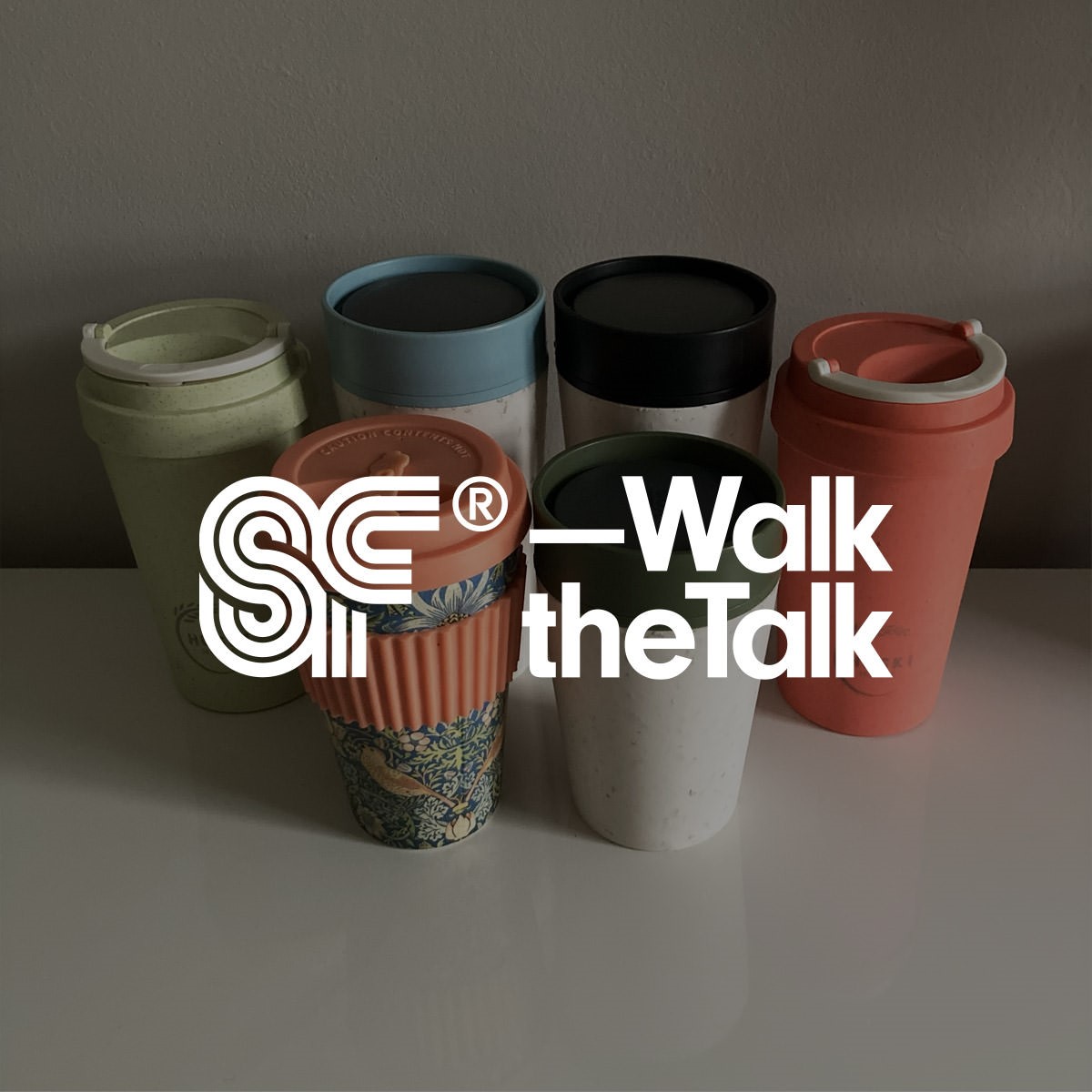
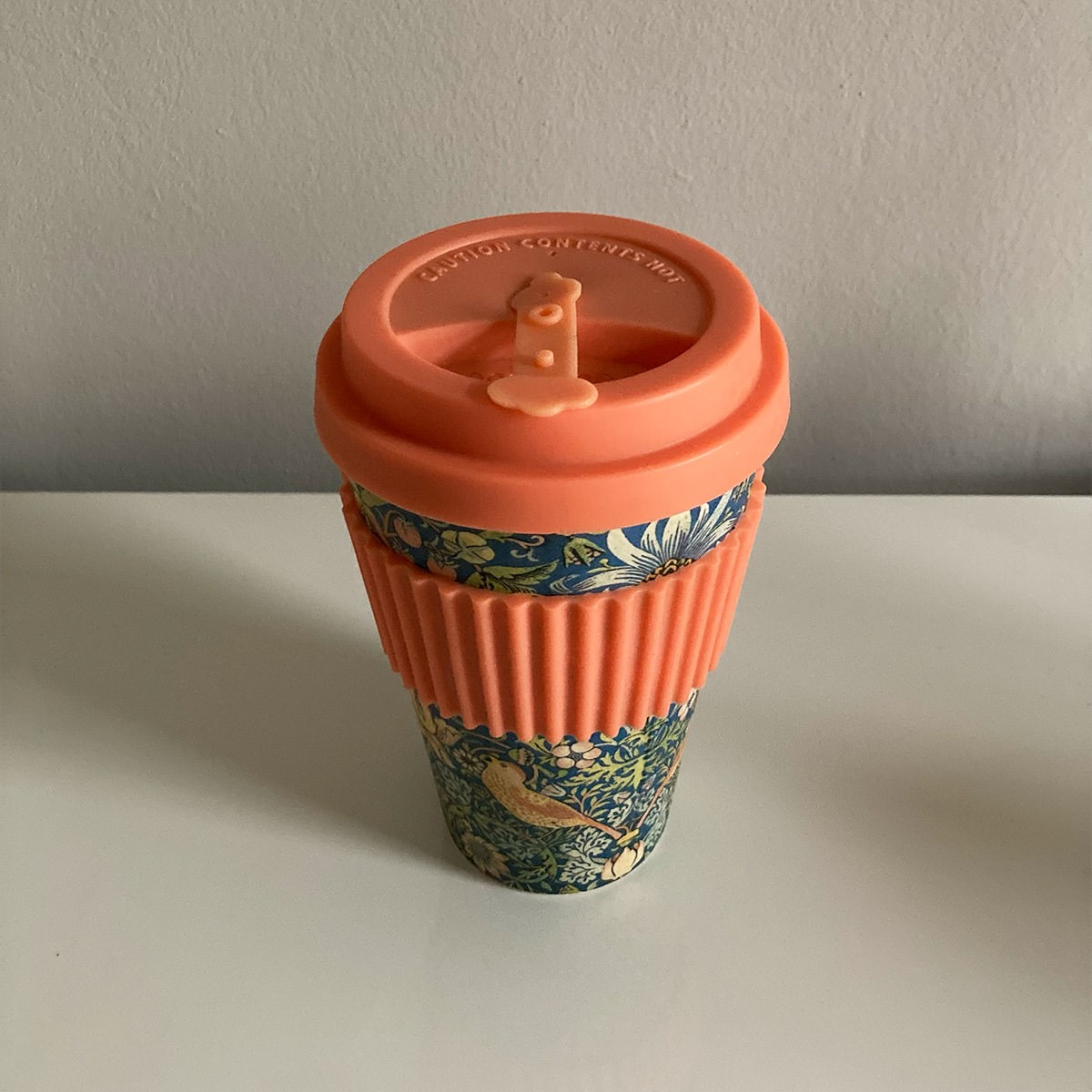
Reusable cups
The usual pattern in our house is that as someone who's 'difficult to buy for' and 'into eco', I am often bought eco-friendly products as gifts for birthdays and Christmas. I subsequently put them in the cupboard, forget, and do not get around to using them. My efficient wife then steals them. I subsequently realise the benefit and buy the item again : )
Over the years this process has meant we have inadvertently tested three different reusable cups. We obviously started with the coolest-looking products and then progressed to the more practical. Ultimately, it would seem a relatively simple product, yet to my astonishment some of them completely fail! I do not know how they passed the testing stage and made it to market.
eCoffee Cup
Cup one is by eCoffee Cup. These look great with a wide range of patterns and colours available. The one we have features a William Morris design. The cups are made from plants using a bio-polymer. The technical details can be seen below.
Our current Ecoffee Cup range is made from plants – 100% natural Polylactic Acid, a bio polymer derived from sugar-beet, sugarcane or corn. Compared with petroleum-based materials, PLA can achieve carbon “break even” – through its natural growing phase. It is also is commercially biodegradable/ or recyclable at end-of-life, via RENEW. It is odour and flavour-taint-free, making it the perfect material for hot beverages.
This sounds positive, But the lids and sleeves are made from silicon as mentioned below –
Our lids and sleeves are made from pure, food-grade silicone, using oxygen and silica (sand) as their base material. They are suitable for high-temperature usage up to +120°C Not made with natural latex rubber.
In order to make a claim of biodegradability and comply with EU standard EN 13432, a product must biodegrade 90% within 6 months. For consumer durable products such as Ecoffee Cup, this is simply not achievable. Despite what some of our less-than-transparent competitors may claim, without exception, there is no re-usable Cup on the market that currently meets this standard.
With regards to price it costs £14.99. I am not familiar with the pricing of this type of product, so I will not be able to consider value for money until I look into the other two.
As mentioned, it looks great, but unfortunately, it leaks! In addition to this, maybe my hands are too sensitive, but when I have picked it up the protective band does not prevent the heat transfer sufficiently from the contents. Consequently, this cup quickly resided in the cupboard gathering dust.
Reference links
-
ecoffee cup – Reusable coffee cups
eCoffee Cup
Reusable coffee cups
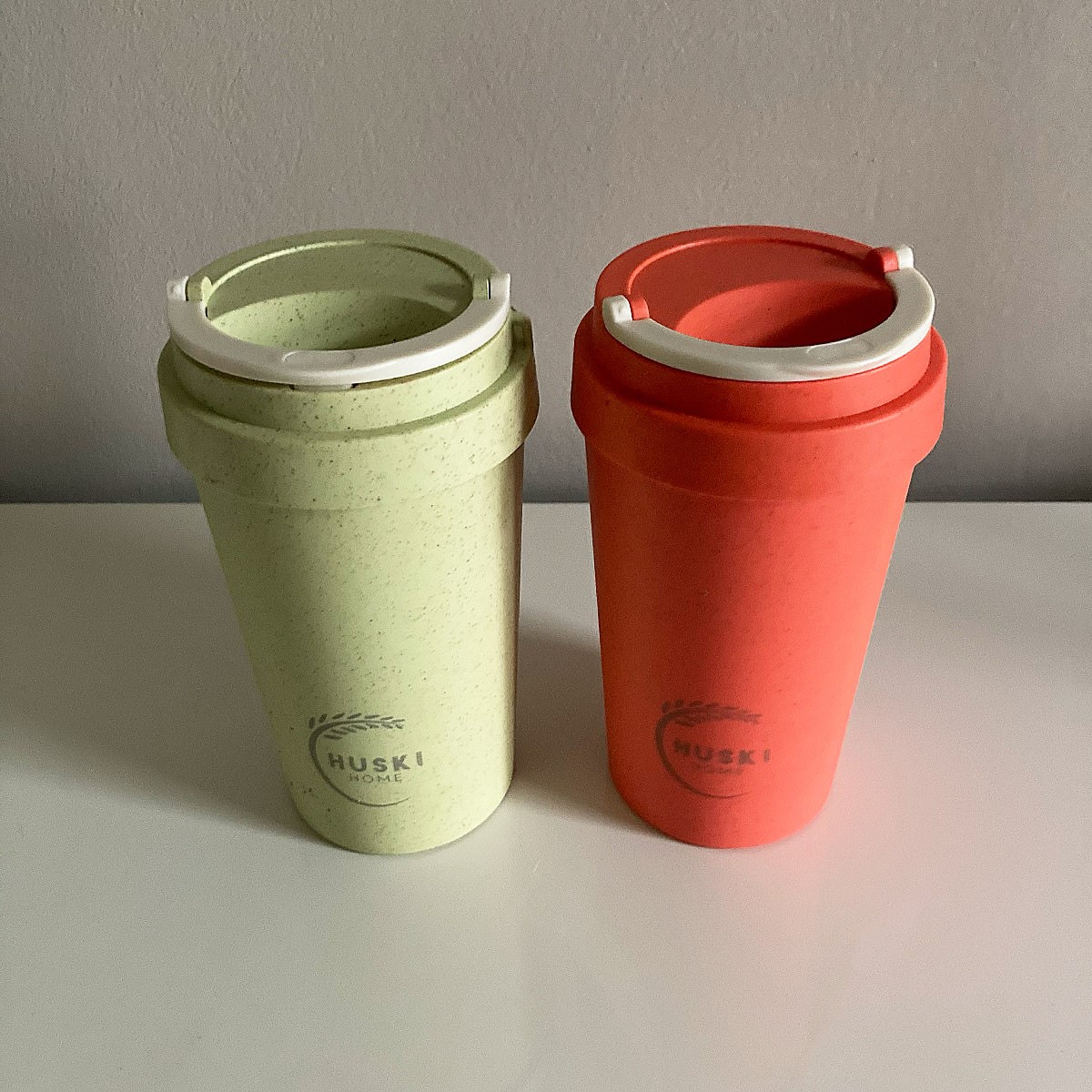
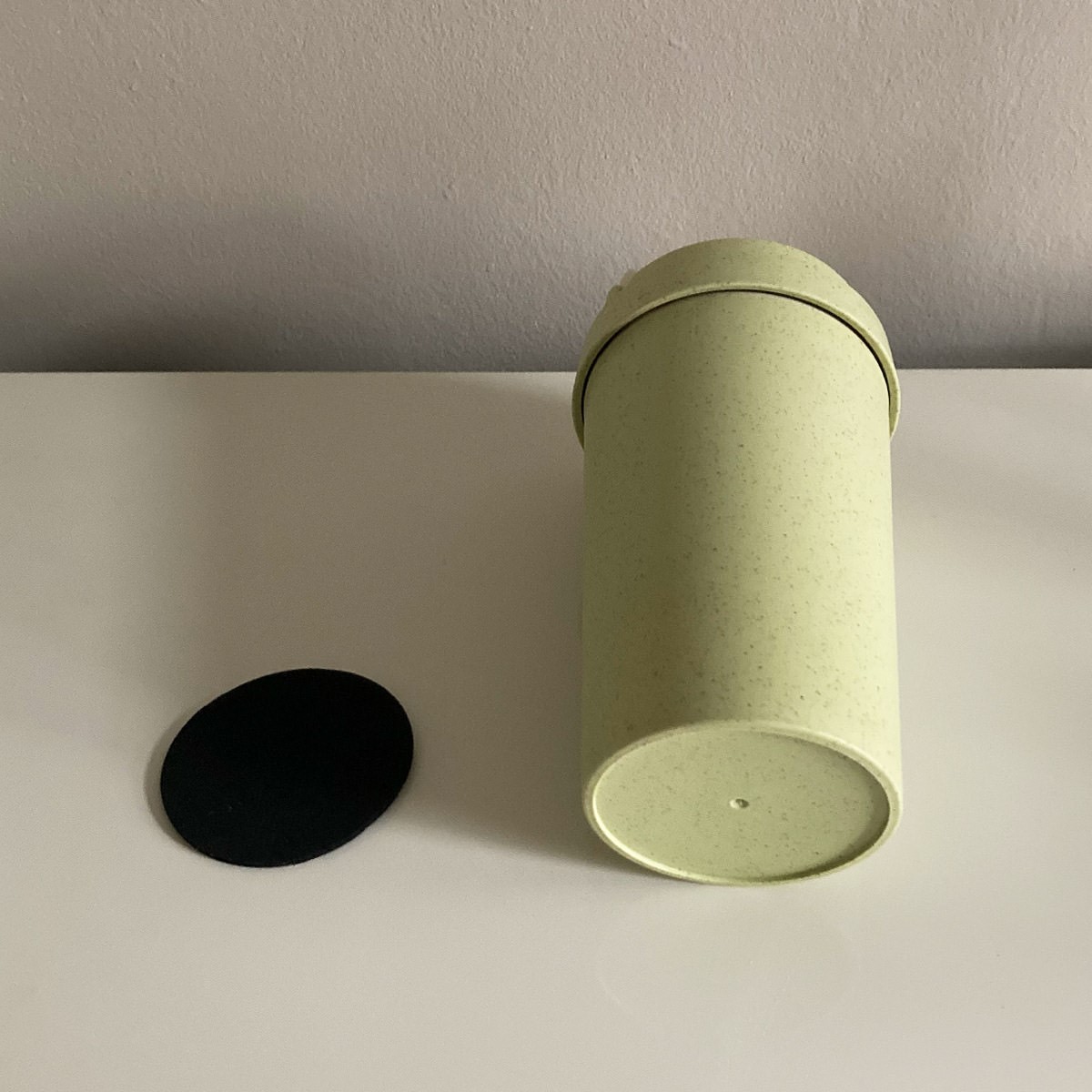
Huski
The second cup is by a family-run company called Huski. Inspired by their son appointed to be an eco-warrior at school when he started to question how they could become more sustainable and reduce waste. This led to research into products that could make a genuine difference.
In the UK alone, 7 million disposable coffee cups are used every day reaching an annual total of approx 2.5 billion of which 182 million ends up on our streets and in our oceans.
Following their research, they decided to develop merchandise from underutilised bi-products. Their travel cups are made from rice husks, which can be a biohazard when not ethically discarded.
Are they any good?
The cups look really good and come in a cool range of colours. They are double-walled insulation for cold or hot drinks.
Here are the official details from the site –
Non-toxic, melamine, and BPA free
Eco-friendly and sustainable
Leak-proof flip lid and a non-slip base
Great for hot or iced beverages on the go
Twin-walled to keep your drinks warmer for longer without burning your hands
Insulated to keep hot drinks at an optimum temperature for up to 90 minutes
Available in sizes of 400ml or 500ml
At first, I was very taken with this product, probably because I am a designer and attracted to things that look good. It seemed solid and well-made. Good so far. However, they fall at the first hurdle since they are not watertight. Despite what they say, I found the flip lid for sipping your beverage is not so leak-proof.
Another issue is the non-slip base. My first impression was that this provides a slightly premium feel, but once it fell off after a few runs through the dishwasher. Maybe they are not dishwasher-proof, but if that is the case, that renders them pretty unusable for the modern user. I then started to wonder what the foam material was made of and what potentially toxic glue was used to adhere it to the cup.
Then I realised it was a waste of my time to even wonder as the cup simply does not work : )
How do they do on price?
Price wise the Huski cups are competitive at just £11.99 vs £14.99 for the eCoffee cups. But that is little comfort since they also leak!
Reference links
-
Huski – Reusable travel cups
Huski
Reusable travel cups
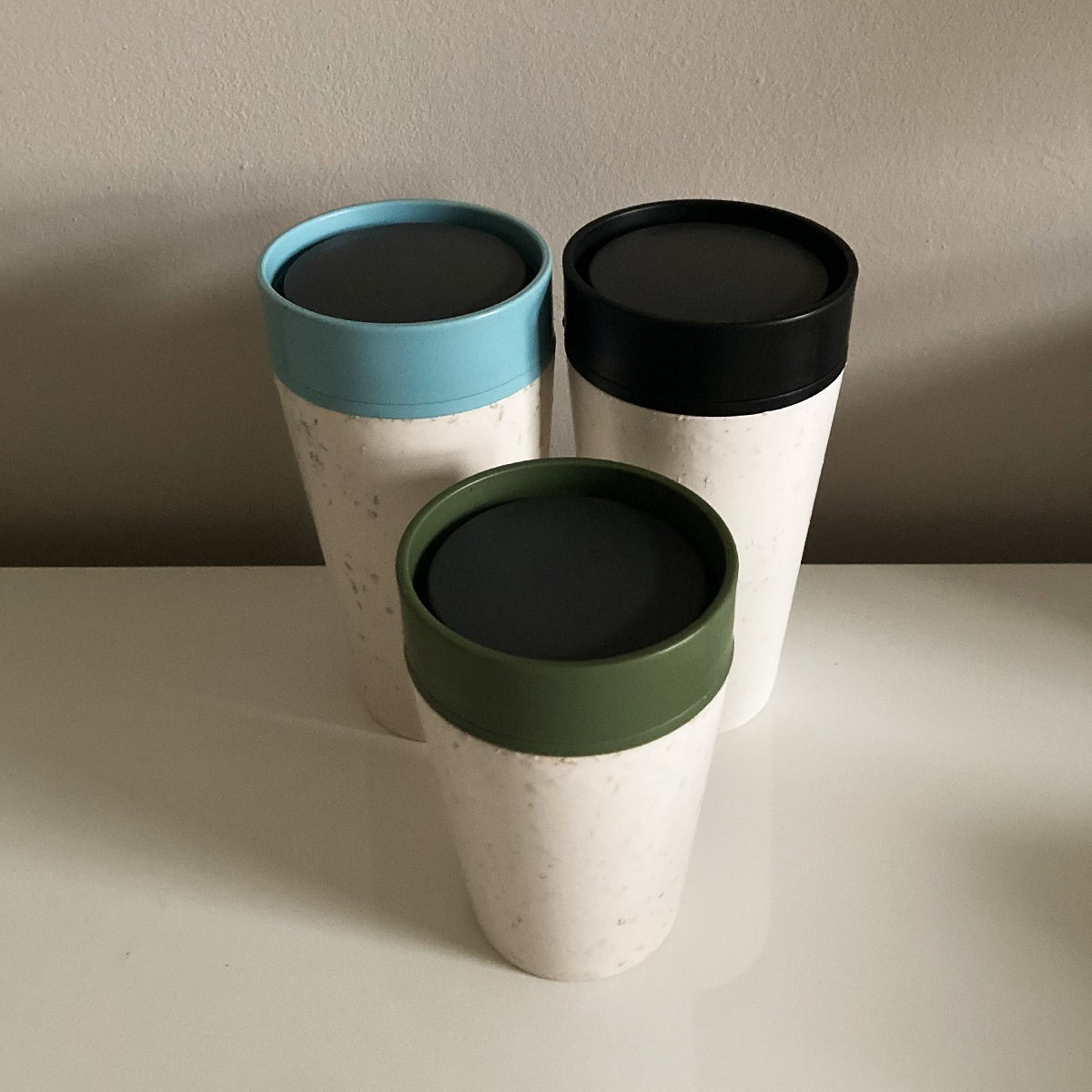
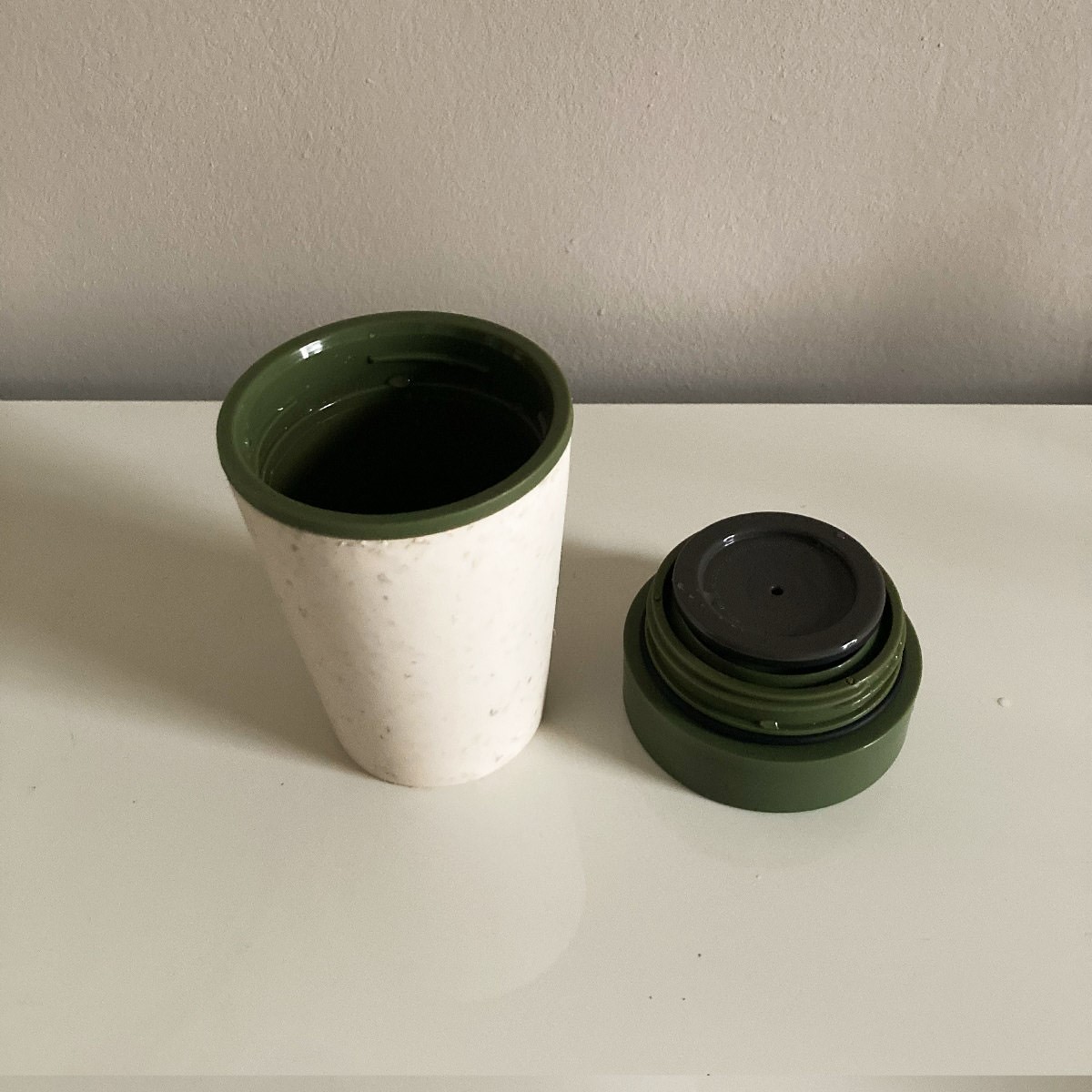
Circular & Co
Now onto cup three. This beast by Circular & Co takes a completely different approach to the other two companies. They have clearly focused on function over form. The cup could not be any simpler in appearance with just two parts. Although at first it looks less designed, in fact, the attention to detail is way ahead. There is a clever open and close mechanism within the lid and all the lids are interchangeable between the large and smaller cup products. Because they want customers to use their cups for as long as possible they sell replacement lids, seals, or bases.
What about the eco credentials?
This is where I had to do a bit of digging. The banner image of the product page, it says that the outer base is made from 6 single-use paper cups. But what about the inside? This I was not able to find in their FAQs or the videos on their YouTube channel.
So I did a Google search and eventually located a research paper on a circular economy site. Here I found the answer I was looking for
The ‘circular cup’ is made with a virgin polypropylene inner and recycled polypropylene outer, combined with single-use paper cups. One of the barriers to a truly closed-loop system is the lack of food-safe recycled material.
This is where I feel they are being disingenuous. If they simply said, at present recycled materials can not achieve the standards we require so we adopted a forever plastic approach – I could respect that.
However, I am now thinking, what is the point of adding the recycled coffee cups on the outside?
Do they serve a practical purpose?
Or do they just provide the recycled aesthetic they require?
Could they actually save more energy in manufacturing if they omitted them?
This is something I think they should address as the other companies have been very transparent. Although this is disappointing, they do state they can be recycled via curbside collection, but if that is not possible they will take them back.
So is it any good?
Yes, they are great. These are completely watertight. I regularly carry it in my rucksack with my laptop – no leaks to date. Simply screw on the lid and push the clickable center down to open and click again to close. Just make sure you remember to close it afterwards – ended up pouring tea down my youngest school trousers whilst wrestling with his coat and chello at drop off!
Not only is it watertight, but this is also like a flask, so it keeps the drink hot and you can pick it up without fear of injury. We now use them indoors as forgetting your tea is no longer an issue as it is still hot and if you knock it over, the carpet or laptop is no longer at risk. In fact, these are so good that sometimes you are caught unaware of how hot the tea still is when you go to take your first sip. We have now each bought secondary cups so that one is always available while the other is in the dishwasher.
I only have one weird spooky gripe. When the room is quiet, sometimes they freak you out with a weird noise. This is where it gets confusing. I assume it must be due to escaping air, but it only occurs when they are closed, so how is occurring if it is watertight? Click it open and it stops, but then there is a risk of spillage.
How do they compare on price?
They offer three sizes. I think the large option is bigger than the other two, and the small cup is smaller. The two options we have – small / medium are £14.95 or £15.95 respectively. They are slightly more expensive and less pretty than the other two, but at least they work : )
Conclusion
I was feeling a bit bad about my harsh comments on the first two cups, so I decided to test them again. The eCoffee did leak again. The Huski Cup did something quite unexpected. I poured some boiling water into the cup, screwed on the top, and closed the water-tight flip lid. I then tilted the cup to see what would happen. At first, it seemed fine, then suddenly the flip lid popped open and shot boiling water out across the room! Luckily it was facing the wall at the time. Needless to say, I no longer feel any regret for my previous analysis : )
Regarding Circular & Co, I have to admit I am a bit disappointed that I had to dig to find out how they are made. Having said that, they do perform exactly as intended so will remain in use for a long time. Meanwhile, the other cups which may be considered superior from a green perspective will need to be recycled since they are not fit for purpose.
Ultimately, at present, I would still recommend Circular & Co, but once again I have found there are no perfect products or solutions.
Reference links
-
Circular & Co – Reusable coffee cups
Circular & Co
Reusable cups
-
CE-Hub – Circular & Co Case study
CE-Hub
Circular & Co Case study
―
Despite a lack of transparency, I still feel positive on finding another potential eco friendly product solution. However, please drop me a message if I have missed something, or you have had an alternative experience with these eco friendly products.
As this edition has shown, brand communications can be complex. So book a call to discuss how Superfried can develop a bespoke creative strategy for your business.
Mark
―
#SuperfriedWalktheTalk